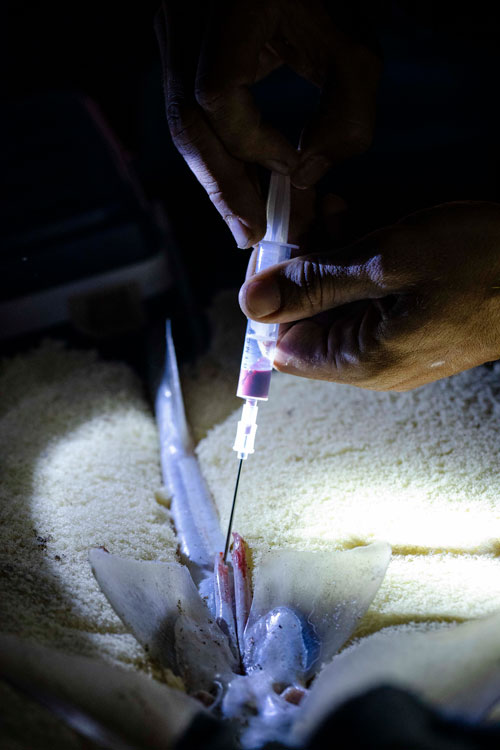Searching for chimaeras
My project will assess physiological alterations in the reproductive system of the American Elephant Fish (AEF) due to anthropic pollution. To study physiological alterations in AEF, we need to compare physiological markers between fish inhabiting an impacted polluted area with fish inhabiting a pristine or less impacted area. In our case, we find this scenario in two nearby but separated gulfs, Nuevo Gulf and San Jose Gulf, in south Argentine. Both Gulfs are known for the vast marine diversity they host, from whales, dolphins, sea lions, and elephant seals to a wide variety of marine birds such as penguins and petrels. The Nuevo Gulf carries a significant anthropic impact due to the coastal city, Puerto Madryn, while the San Jose Gulf is situated inside a protected area, Peninsula Valdes, and no cities are developed along the coast.
To obtain reproductive (sex steroids) and immunological (blood cell count) parameters for this project, we performed non-lethal sampling involving blood extraction. Once AEFs are caught, blood samples are obtained in 2-3 min, after which individuals are returned back into the water.

Blood extraction from the caudal vein of an American Elephant Fish. Photo © Marco Cristiani
However hard we tried, finding the AEF has been very challenging!!! Fishing is a diverse activity practised in a wide range of modalities. As part of my project, I have had to learn from basic fishing abilities to the social aspects of the sport. Samples were not going to fall from the sky!. On the Argentinian coast, the AEF can be caught from the coastline only during the spring-summer season when the species approaches shallow waters to breed. As with any other fish, they have specific habits. Where do they feed? When? What are they eating? are some of the questions most experienced fishermen know. Thus, interacting with the local fishing community and getting their knowledge and help to work with this to find species has been very important. Catching the AEF itself is an easy task as they don´t present any strong struggle once caught. Nevertheless, the challenge is to find them.
From theory to practice, there’s a long way. Countless nights we´ve spent with the fishermen trying over and over to get at least one AEF. The wonders of working with wild animals, some days are there and some days just are not where to be seen! Most of our sampling ended with no samples! We just continued, sunset after sunset, building nice relationships with expert fishermen, and we captured some fish every now and then. Sampling in waters along the city was easier in comparison to the pristine area because we were very lucky to have the help of two great fishermen, Gustavo and Juan, who joined us in almost every sampling and their experience and compromise made it possible to increase the number of specimens throughout the season. But in the pristine area, we found ourselves alone. Fishing depended exclusively on us as no recreational fishermen were visiting the area.
As in most scientific projects, things weren’t going as planned, we couldn´t find AEF, and we needed to solve the issue. Stay tuned for the next blog to find out…
